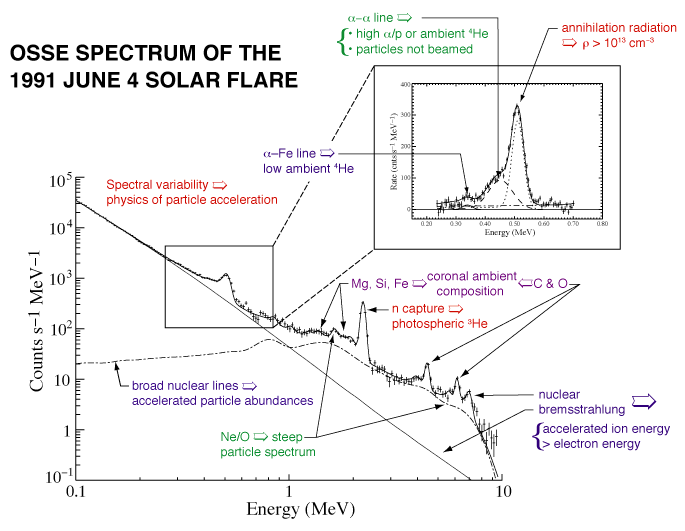June 4, 1991 Solar Flare Spectrum

Click image for larger view
Several aspects of solar-flare physics can be addressed by studying gamma-ray spectra. These are illustrated in the count spectrum of the 1991 June 4 solar flare observed by OSSE. The spectrum is made of several components that are fit to the data (solid curve through the points). Bremsstrahlung from electrons, represented by the power law, dominates the spectrum at low energy. Nuclear-line emission dominates the spectrum from ~0.6 to 8 MeV. Several moderately broadened (~1%-2%) lines provide information on solar ambient abundance and the spectrum of the protons and alpha particles that excite the line-emitting nuclei. The energies in accelerated ions and electrons are comparable in flares. The neutron capture-line at 2.223 MeV is key for determining the solar 3He abundance. Shown in the inset is the positron annihilation line and continuum as well as the broadened lines from the fusion of alpha particles with ambient He (shown by the dashed curve) and a weak line from alpha particles interacting with ambient Fe. Highly Doppler-broadened lines (~25%) produced when flare-accelerated ions such as C and Fe interact with ambient H can be revealed by subtracting the bremsstrahlung and resolved lines; accelerated Fe is found to be strongly enhanced.
If you have a question about CGRO, please contact us via the Feedback form.

